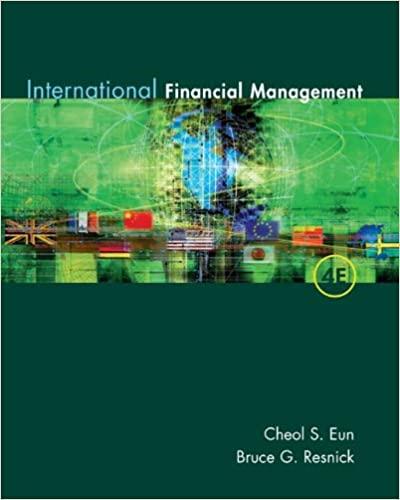Answered step by step
Verified Expert Solution
Question
1 Approved Answer
There are two firms, A and B . Each firm has bonds outstanding with a par value of $ 2 0 , 0 0 0
There are two firms, A and B Each firm has bonds outstanding with a par value of $ and years to maturity as of the end of FY Firm As bonds pay annual coupons of Firm Bs bonds pay annual coupons of Assume:
For the year all sales, inventory purchases from suppliers, operating expenses and taxes are made in cash.
All the net income is paid out as dividends for each firm.
The tax rate is
Complete the FY income statement, the FY direct statement of cash flows and the EOY' balance sheet below for each firm. Note that you'll have to compute the YTM on the bonds for each company in order to find the interest expense. Similar to what we did in class, prepare the first year of the amortization table, and use it to find what goes in interest expense income statement and the ending carrying value of the bonds balance sheet value as at EOY' Note that the bonds payable on the balance sheet at EOY' would be the beginning carrying value present value when calculating YTM
FIRM A
EOY'
Cash
Accounts Receivable
Inventory
Current Assets
Net PPE
Total Assets
Accounts Payable
Bonds Payable
Equity
Total LIab. & Equity
EOY'
Cash
Accounts Receivable
Inventory
Current Assets
Net PPE
Total Assets
Accounts Payable
Bonds Payable
Equity
Total LIab. & Equity
FY
Sales
COGS
Gross Profit
Operating Expenses
Depreciation
EBIT
Interest Expense
EBT
Taxes
Net Income
Dividends
Cash collected from sales
Cash paid for inventory purchase
Cash paid for operating expenses
Cash paid for interest
Cash Flow from Operating Act.
Issuance of LongTerm Debt
Dividends Paid
Cash Flow from Financing Act.
Cash Flow from Investing Act.
Net Change in Cash
FIRM B
EOY'
Cash
Accounts Receivable
Inventory
Current Assets
Net PPE
Total Assets
Accounts Payable
Bonds Payable
Equity
Total LIab. & Equity
EOY'
Cash
Accounts Receivable
Inventory
Current Assets
Net PPE
Total Assets
Accounts Payable
Bonds Payable
Equity
Total LIab. & Equity
FY
Sales
COGS
Gross Profit
Operating Expenses
Depreciation
EBIT
Interest Expense
EBT
Taxes
Net Income
Dividends
Cash collected from sales
Cash paid for inventory purchase
Cash paid for operating expenses
Cash paid for interest
Cash Flow from Operating Act.
Issuance of LongTerm Debt
Dividends Paid
Cash Flow from Financing Act.
Cash Flow from Investing Act.
Net Change in Cash
Step by Step Solution
There are 3 Steps involved in it
Step: 1

Get Instant Access to Expert-Tailored Solutions
See step-by-step solutions with expert insights and AI powered tools for academic success
Step: 2

Step: 3

Ace Your Homework with AI
Get the answers you need in no time with our AI-driven, step-by-step assistance
Get Started


